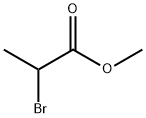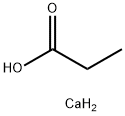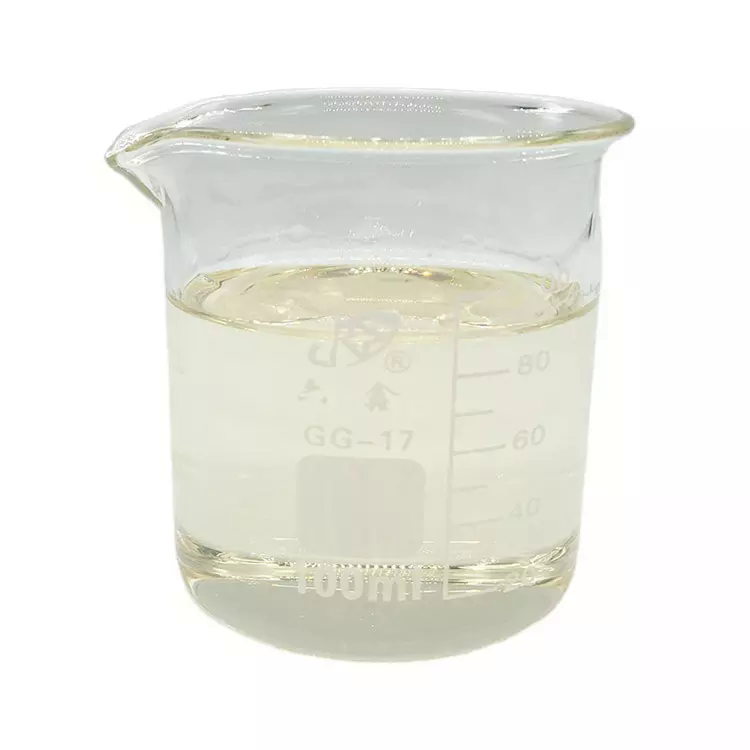Methyl propionate
Synonym(s):Methyl propionate;Propionic acid methyl ester
- CAS NO.:554-12-1
- Empirical Formula: C4H8O2
- Molecular Weight: 88.11
- MDL number: MFCD00009306
- EINECS: 209-060-4
- SAFETY DATA SHEET (SDS)
- Update Date: 2024-12-18 14:15:32

What is Methyl propionate?
Description
Methyl propionate, also known as methyl propanoate, is a chemical compound with the molecular formula C4H8O2. It is a volatile ester with a sweet, fruity, rum-like odor.
Chemical properties
colourless liquid
Chemical properties
Methyl propionate is colorless liquid with a sweet, fruity, rum-like odor.
Chemical properties
Methyl propionate has a fruity odor reminiscent of rum with a sweet flavor suggestive of black currant. May be prepared by direct esterification of the acid with methanol in the presence of concentrated H2S04.
Chemical properties
Methyl propionate has a fruity odor reminiscent of rum. It has a sweet flavor suggestive of black currant
Occurrence
Reported found in guava, honey, melon, pineapple, raspberry, blackberry, strawberry, cheddar cheese, cooked beef, coffee, soy protein, durian (Durio zibethinus), starfruit, plum brandy, cherimoya, kiwifruit, naranjilla, mussels and rooibus tea (Aspalathus linearis)
The Uses of Methyl propionate
Methyl propionate is used as a solvent for cellulose nitrate and lacquers, and as a raw material for the production of paints, varnishes and other chemicals such as methyl methacrylate.
Due to its fruity smell and taste, it is also used in fragrances and flavoring.
The Uses of Methyl propionate
It is commonly used in organic synthesis. It undergoes vapor-phase aldol condensation with formaldehyde to form methyl methacrylate.
What are the applications of Application
Methyl propionate is a volatile odorant
Preparation
Methyl propionate can be prepared by esterification of propionic acid with methanol. Industrially, it is prepared by the reaction of ethylene with carbon monoxide and methanol in the presence of nickel carbonyl.
Production Methods
Methyl propionate is produced by the direct esterification of propionic acid with methanol in the presence of concentrated sulfuric acid .
Definition
ChEBI: Methyl propionate is a carboxylic ester.
Aroma threshold values
Detection: 100 ppb to 8.8 ppm
General Description
A clear colorless liquid. Flash point 28°F. Density about the same as water. Vapors heavier than air. May irritate skin, eyes, and mucous membranes. Used for flavoring and as a solvent.
Air & Water Reactions
Highly flammable. Soluble in water.
Reactivity Profile
Methyl propionate reacts with acids to liberate heat along with alcohols and acids. Strong oxidizing acids may cause a vigorous reaction that is sufficiently exothermic to ignite the reaction products. Heat is also generated by the interaction with caustic solutions. Flammable hydrogen is generated with alkali metals and hydrides.
Hazard
Flammable, dangerous fire risk, explosivelimits in air 2.5–13%.
Health Hazard
May cause toxic effects if inhaled or absorbed through skin. Inhalation or contact with material may irritate or burn skin and eyes. Fire will produce irritating, corrosive and/or toxic gases. Vapors may cause dizziness or suffocation. Runoff from fire control or dilution water may cause pollution.
Fire Hazard
HIGHLY FLAMMABLE: Will be easily ignited by heat, sparks or flames. Vapors may form explosive mixtures with air. Vapors may travel to source of ignition and flash back. Most vapors are heavier than air. They will spread along ground and collect in low or confined areas (sewers, basements, tanks). Vapor explosion hazard indoors, outdoors or in sewers. Runoff to sewer may create fire or explosion hazard. Containers may explode when heated. Many liquids are lighter than water.
Flammability and Explosibility
Flammable
Safety Profile
Moderately toxic by ingestion. Mildly toxic by inhalation. A skin irritant. A very dangerous fire hazard when exposed to heat, flame, or oxidizers. Explosive in the form of vapor when exposed to heat or flame. To fight fire, use foam, CO2, dry chemical. When heated to decomposition it emits acrid smoke and irritating fumes.
Synthesis
By direct esterification of the acid with methanol in the presence of concentrated H2SO4
Potential Exposure
Used as a solvent; and in making paints, lacquers, and varnishes. Also used in flavorings and fragrances
First aid
If this chemical gets into the eyes, remove anycontact lenses at once and irrigate immediately for at least15 min, occasionally lifting upper and lower lids. Seekmedical attention immediately. If this chemical contactsthe skin, remove contaminated clothing and wash immediately with soap and water. Seek medical attention immediately. If this chemical has been inhaled, remove fromexposure, begin rescue breathing (using universal precautions, including resuscitation mask) if breathing hasstopped and CPR if heart action has stopped. Transferpromptly to a medical facility. When this chemical hasbeen swallowed, get medical attention. Give large quantities of water and induce vomiting. Do not make an unconscious person vomit.
storage
Color Code—Red: Flammability Hazard: Store ina flammable liquid storage area or approved cabinet awayfrom ignition sources and corrosive and reactive materials.Prior to working with methyl propionate you should betrained on its proper handling and storage. Before enteringconfined space where this chemical may be present, checkto make sure that an explosive concentration does not exist.Store in tightly closed containers in a cool, well-ventilatedarea away from oxidizers, strong acids, strong bases. Wherepossible, automatically pump liquid from drums or otherstorage containers to process containers. Drums must beequipped with self-closing valves, pressure vacuum bungs,and flame arresters. Use only nonsparking tools and equipment, especially when opening and closing containers ofthis chemical. Wherever this chemical is used, handled,manufactured, or stored, use explosion-proof electricalequipment and fittings.
Shipping
UN1248 Methyl propionate, Hazard Class: 3; Labels: 3-Flammable liquid.
Purification Methods
Wash the ester with saturated aqueous NaCl, then dry it with Na2CO3 and distil it from P2O5. (This removes any free acid and alcohol.) It has also been dried with anhydrous CuSO4. [Beilstein 2 IV 104.]
Incompatibilities
May form explosive mixture with air. Incompatible with oxidizers (chlorates, nitrates, peroxides, permanganates, perchlorates, chlorine, bromine, fluorine, etc.); contact may cause fires or explosions. Keep away from alkaline materials, strong bases, strong acids, oxoacids, epoxides. Keep away from heat and moisture.
Properties of Methyl propionate
| Melting point: | -88 °C (lit.) |
| Boiling point: | 79 °C (lit.) |
| Density | 0.915 g/mL at 25 °C (lit.) |
| vapor density | 3 (vs air) |
| vapor pressure | 40 mm Hg ( 11 °C) |
| refractive index | n |
| FEMA | 2742 | METHYL PROPIONATE |
| Flash point: | 43 °F |
| storage temp. | Store below +30°C. |
| solubility | H2O: soluble16 parts |
| form | Liquid |
| color | Clear colorless |
| Odor | at 100.00 %. fresh harsh rum fruity strawberry apple |
| explosive limit | 2.5-13%(V) |
| Water Solubility | 5 g/100 mL at 20 ºC |
| Merck | 14,6112 |
| JECFA Number | 141 |
| BRN | 1737628 |
| Dielectric constant | 5.5(19℃) |
| Stability: | Stable. Highly flammable. Incompatible with strong oxidizing agents, acids, bases. Readily forms explosive mixtures with air. Moisture sensitive. |
| CAS DataBase Reference | 554-12-1(CAS DataBase Reference) |
| NIST Chemistry Reference | Propanoic acid, methyl ester(554-12-1) |
| EPA Substance Registry System | Methyl propionate (554-12-1) |
Safety information for Methyl propionate
| Signal word | Danger |
| Pictogram(s) |
 Flame Flammables GHS02  Corrosion Corrosives GHS05  Exclamation Mark Irritant GHS07 |
| GHS Hazard Statements |
H225:Flammable liquids H318:Serious eye damage/eye irritation H332:Acute toxicity,inhalation |
| Precautionary Statement Codes |
P210:Keep away from heat/sparks/open flames/hot surfaces. — No smoking. P233:Keep container tightly closed. P240:Ground/bond container and receiving equipment. P280:Wear protective gloves/protective clothing/eye protection/face protection. P305+P351+P338:IF IN EYES: Rinse cautiously with water for several minutes. Remove contact lenses, if present and easy to do. Continuerinsing. |
Computed Descriptors for Methyl propionate
Methyl propionate manufacturer
ENANTI LABS PVT LTD
New Products
(S)-3-Aminobutanenitrile hydrochloride 4-Methylphenylacetic acid N-Boc-D-alaninol N-BOC-D/L-ALANINOL Tert-butyl bis(2-chloroethyl)carbamate 3-Morpholino-1-(4-nitrophenyl)-5,6-dihydropyridin- 2(1H)-one Furan-2,5-Dicarboxylic Acid Tropic acid 1-Bromo-3,5-Di-Tert-Butylbenzene S-2-CHLORO PROPIONIC ACID ETHYL ISOCYANOACETATE 2-Bromo-1,3-Bis(Dimethylamino)Trimethinium Hexafluorophosphate 4-IODO BENZOIC ACID 3-NITRO-2-METHYL ANILINE 1-(2,4-DICHLOROPHENYL) ETHANAMINE (2-Hydroxyphenyl)acetonitrile 4-Bromopyrazole 2-(Cyanocyclohexyl)acetic acid 4-methoxy-3,5-dinitropyridine 1-(4-(aminomethyl)benzyl)urea hydrochloride 2-aminopropyl benzoate hydrochloride diethyl 2-(2-((tertbutoxycarbonyl)amino) ethyl)malonate tert-butyl 4- (ureidomethyl)benzylcarbamate Ethyl-2-chloro((4-methoxyphenyl)hydrazono)acetateRelated products of tetrahydrofuran








You may like
-
 Methyl propionate 95% CAS 554-12-1View Details
Methyl propionate 95% CAS 554-12-1View Details
554-12-1 -
 Methyl propionate CAS 554-12-1View Details
Methyl propionate CAS 554-12-1View Details
554-12-1 -
 Methyl Propionate CAS 554-12-1View Details
Methyl Propionate CAS 554-12-1View Details
554-12-1 -
 Methyl propionate CAS 554-12-1View Details
Methyl propionate CAS 554-12-1View Details
554-12-1 -
 METHYL PROPIONATE CAS 554-12-1View Details
METHYL PROPIONATE CAS 554-12-1View Details
554-12-1 -
 554-12-1 Methyl propionate 99%View Details
554-12-1 Methyl propionate 99%View Details
554-12-1 -
 554-12-1 98%View Details
554-12-1 98%View Details
554-12-1 -
 118753-70-1 98+View Details
118753-70-1 98+View Details
118753-70-1